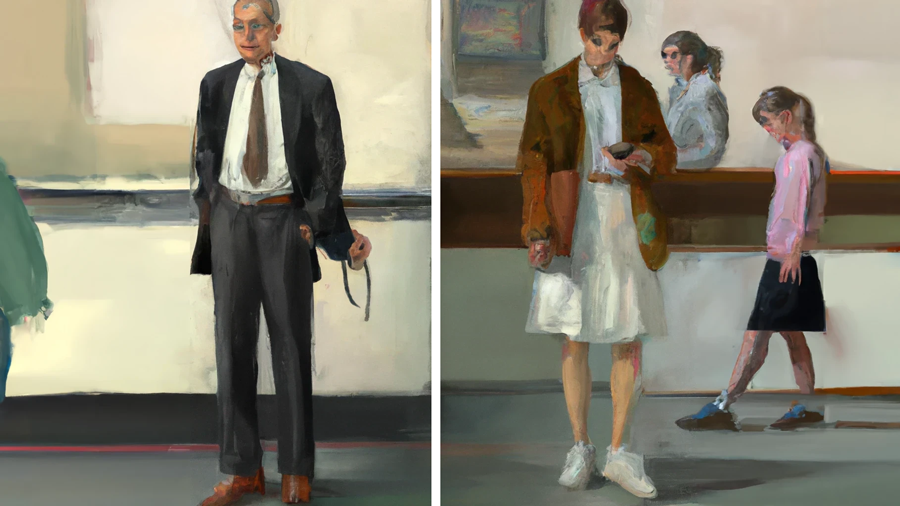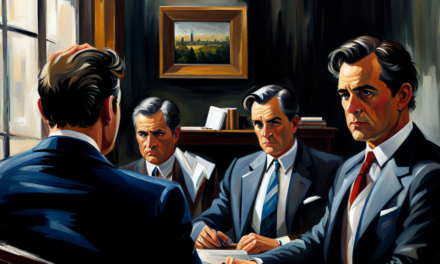Breaking the inter-generational divide will enable leaders to have deep vertical impact and unify organisations for strong sustainable growth.
The top concern for CEOs this year is workforce fragility¹, both across and down through the organisation, with particular concern about engaging, leading and retaining Millennial and Gen Z populations. Why?
Millennials and Gen Zs are reportedly more anxious and stressed than previous generations and are dispositioned towards ‘voting with their feet’. Research shows significant increases in mental ill health diagnosis amongst these populations. Whereas Baby Boomers and Gen Xers tendency is to continue to ‘silently soldier on’ with an unhappy work situation, the bulk of the workforce under 44 (i.e. M and GenZ) are more likely to take action to bring personal relief.
This is posing a challenge in a time when stability and loyalty needs to be established internally (with employees) and externally (with clients and customers). As a result, a new tension exists within organisations today, with leaders wanting to make decisions to take the business forward, yet concerned about the potential workforce resilience and divide. It is therefore becoming critical that leaders address this issue, redress the flight tendencies of the Millennials and GenZs through fostering intergenerational collaboration.
Generational Diversity is Releasing New Thinking
At one level, generational diversity is releasing new thinking and a creativity which when captured challenges the status quo and provides a confident acceleration in moving the organisation forward. The adoption of ‘tennis shoes’ illustrates this. Baby Boomers looked on quizzically when Gen Zs wore trainers with suits! The fashion industry captured the trend, presenting images of trainers and ‘office shoes’ and everything in between as part of the corporate dress code. Subsequently there’s been a widespread adoption amongst Millennials and Gen Xs’ – but possibly not the Baby Boomers!
Whilst appearance divides might be interesting, what is more important yet less obvious are the attitudinal divides, which are harder to adopt, or challenge, unless surfaced. Properly understood, these attitudinal divides present the opportunity to unify an organisation beyond appearance and attitudes, and around principles, outcomes and impact.
To leverage this generational diversity, leaders need to authentically seek to understand the anxieties whilst transitioning the flight responses into engaging and retaining the new energisers of the business. Leaders also need to confidently create followership around elevated collective goals of creativity and collaboration. Some organisations are experimenting with shadow executive leadership teams, next generation councils and reverse mentoring. However, intergenerational workshops creating the trust to connect, create, collaborate and grow will deliver the resilience to be able to move forward at pace and provide the basis on which to make these critical business decisions with confidence.
Intergen workshops – working first with the leadership team to determine the connection strength with the goal to move from transactional to relational connection, provides the critical role model of enhanced collaboration and creativity in problem solving from the top. This is the launch pad to connect and create authentic change down through the organisation. Facilitated intergenerational leader-led workshops on critical topics with cross generational groups create vertical expressions of care, bottom-up generated changes and a new determination to deliver new goals.
Leadership and Change
In practice it’s about bringing the leadership team together and aligning on the topic; assessing the current position and challenging the status quo where necessary, to establish an authentic and unified leadership posture capable of leading and inspiring intergenerationally. This involves an honest look in the leadership mirror with the aim of seeing what others might see and having the courage and capacity to change and grow. Usually, leadership teams are too busy for self/team-reflection, however, this is exactly what is needed if you want to be able to lead effective positive change.
Step 1: take time out as a leadership team to assess and reflect on your current ‘intergenerational effectiveness’ and identify an organisational engagement plan. Once the leadership team is aligned and ready, the next part is to engage with stakeholders that represent generational and cross-functional diversity in a constructive ‘differences/divide dialogue’. Careful planning and facilitation will identify important key differences to provoke thought, enable discussion and agree a response. Half the challenge is identifying the key ‘divide points’ and understanding the root issues, which once uncovered will allow for the right discussion, and ultimately a unified resolution to be found. Surveying can be an effective and easy way to identify generational differences, providing relevant data and insight for a facilitated differences dialogue.
Step 2: identify the relevant topics and engage in intergen workshops to bravely, yet constructively, bridge divides and establish intergenerational strength.
Some of the intergenerational divide themes that have emerged in recent survey’s2 include; culture, particularly the importance of inclusivity and active engagement in social issues; flexible and hybrid working; and the importance of effective DEI initiatives, especially relating to equality, diversity of background and experiences, community support, and investment in the development of underrepresented groups.
Choosing to engage in the process of deeper connection and goal alignment enables intergenerational unity and generates a new confidence for CEOs in their decision making. Adopting and embedding this inclusive way of working will grow into a resilient connected culture formed from the inside-out, dealing with concerns such as high turnover. Whilst getting this wrong is costly, getting it right is a prize worth pursuing.
References
1. DDI Global Leadership Forecast, 2023; Deloitte Global 2023 Gen Z and Millennial Survey
2. Addressing generational preferences in the workplace, 2022 EY US Generation Survey, DDI Global LEadershp Forecast, 2023
Andrew is a Principal in the Leadership Practice at Odgers Berndtson. He has worked at a global executive committee level, with country leadership teams in the UK, Europe, Asia, and the Middle East. Some of his specialisms include the actuarial, legal, finance and education sectors, as well as sales and operations teams. He is a certified ICF coach on a mission to see leadership teams thrive.








Well said Andrew. A lot of thought has gone into this.